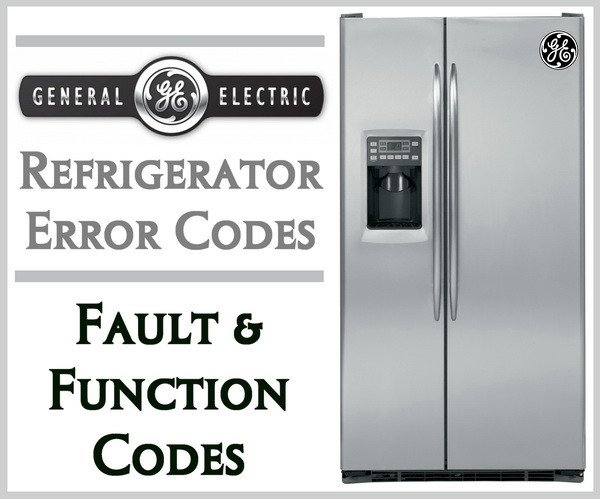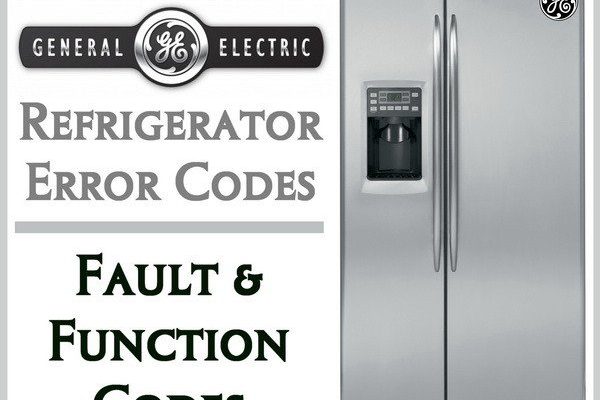
These error codes can be tricky, but they’re designed to help with diagnostics. Essentially, the error code SE is a signal that something isn’t quite right with your refrigerator. Understanding what this specific code means can save you a lot of time and potentially a lot of money. It’s like when your car’s check engine light comes on – identifying the issue sooner rather than later can prevent a small hiccup from becoming a big headache. So, let’s dive into what could be causing this error code SE to appear and what you can do about it.
Understanding Error Code SE
Before getting into the nuts and bolts, let’s figure out what error code SE actually represents. In GE refrigerators, this code typically relates to a sensor error. Imagine your refrigerator having tiny butler-like sensors tasked with keeping everything running smoothly. When one of them malfunctions, the error code SE is triggered. This code is essentially the butler’s way of notifying you that it’s not able to perform its duty properly.
Now, you might be wondering, why are sensors so crucial? Well, think of them as the eyes and ears of your fridge. They monitor temperatures, manage defrost cycles, and ensure everything is working in harmony. When one of these sensors goes haywire, it’s like asking someone to work blindfolded – not an easy task. Notably, the temperature sensor is often the culprit for this specific error. When it fails, your fridge might struggle to maintain the correct temperature, which can start affecting your food.
So, what’s next if you see this error? First, try the simple things: check if the door is closed all the way, as an open door can disrupt the internal temperature. Sometimes, a reset might be needed, which you can perform by unplugging the refrigerator for about five minutes. If the error persists, then it’s time to delve deeper into potential sensor issues or seek a professional hand.
Potential Causes of the Error
Alright, let’s get down to business. What could be causing this error? One common reason is a malfunctioning temperature sensor. Imagine if your fridge’s internal thermostat caught a cold and started reading temperatures all wrong. This troublesome sensor can lead to irregular cooling patterns, causing the SE code to flash up on your display. It’s like having a broken thermometer – you can’t trust the reading, and neither can your fridge.
Another potential suspect is a faulty control board. Think of this as the brain of your refrigerator, coordinating all of its functions. If the control board is on the fritz, it’s like trying to navigate with a wonky GPS – you’re bound to run into some detours. A glitch in this brainpower can lead to improper signals being sent, causing various codes to appear, including SE.
Finally, there could be a wiring issue. Just as a faulty wire in a string of holiday lights can leave half the strand dark, a wiring problem in your fridge can lead to sensor issues. This, again, results in the SE error, signaling that something isn’t quite making the connection it should. In this case, getting an expert to inspect the wiring might be the best step forward.
Troubleshooting and Solutions
Let’s talk solutions. If a temperature sensor is at fault, replacing it can usually resolve the issue. But how do you know? Well, if your fridge is struggling to stay cold despite the settings, that’s a big clue. Swapping out a sensor is like changing a battery in a remote; sometimes, it’s all you need to restore function. If you’re comfortable doing some handy work, you might find online guides to DIY, but don’t hesitate to call a pro if you’re unsure.
Should a control board be the reason for your woes, this might be a repair best left to skilled hands. Just like you wouldn’t want to pop open your computer’s motherboard without know-how, handling a fridge’s control board needs precision. Consulting a repair service could save you stress and ensure a thorough check.
For wiring issues, again, safety first. Faulty wiring can be a fire hazard, not just an inconvenience. If you’ve recently moved your fridge or had a power surge, these might have loosened or damaged some of the connections. In such cases, having a certified technician check it out is the prudent choice.
Prevention Tips and Final Thoughts
So, how do we keep error code SE at bay? Regular maintenance is key. Just like your car, your fridge needs a bit of TLC. Clean the coils every few months to keep it running efficiently. This reduces the strain on sensors and can prevent issues from cropping up. Also, be mindful of the fridge’s environment – extreme temperatures in the kitchen can throw off the delicate balance inside.
Another tip is to avoid overstuffing your refrigerator. Think of it like wearing too many layers of clothing – it’s hard to move and breath efficiently. A packed fridge can block vents and cause temperature sensors to malfunction. Keep some space around items for air to circulate freely.
Finally, regular check-ups can help spot any potential problems before they become serious. Scheduling a yearly professional inspection can keep your fridge running smoothly and extend its life. In the end, understanding and attending to those little error codes can save you from big hassles down the road.
And there you have it! Hopefully, this guide has demystified the SE error code on your GE refrigerator. With a better understanding and a few proactive steps, you can keep your fridge in top shape and avoid any unexpected surprises.
